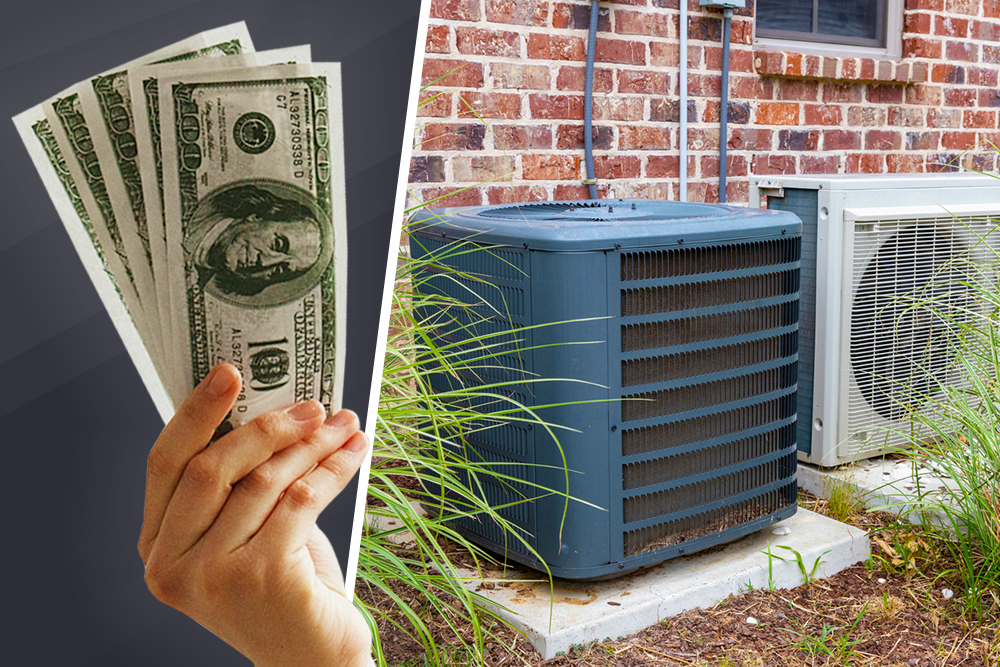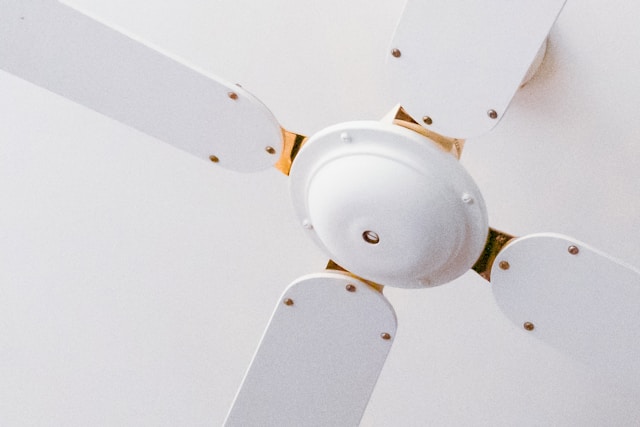
How to Save Money with Air Conditioning
What goes into air conditioning costs?
Air conditioning costs encompass various factors, including initial installation expenses, ongoing maintenance and servicing, energy consumption, and potential HVAC repairs. Let’s delve deeper into each expense:
Initial Installation Expenses
The upfront cost of purchasing and installing an air conditioning system can vary depending on factors such as the type and size of the unit, the complexity of the installation, and any additional features or accessories. Investing in a high-quality and energy-efficient unit during the initial installation phase can help minimize long-term costs.
Regular Maintenance and Servicing
Proper maintenance and servicing are crucial for ensuring the efficient operation and longevity of your air conditioning system. Neglecting routine maintenance tasks such as cleaning coils, checking refrigerant levels, and inspecting electrical components can lead to reduced performance, increased energy consumption, and potential breakdowns. Scheduled maintenance by a professional HVAC technician can help identify and address issues early, preventing costly repairs down the line.
Energy Consumption
Air conditioning accounts for a significant portion of household energy consumption, especially during hot summer months. Older or inefficient units may consume more energy to achieve the desired cooling effect, resulting in higher utility bills. Implementing energy-saving practices such as setting thermostats to optimal temperatures, using programmable thermostats, and improving home insulation can help reduce energy consumption and lower cooling costs.
Repairs
Failure to perform regular maintenance and address issues promptly can lead to costly repairs. Common problems that may arise due to inadequate maintenance include refrigerant leaks, clogged air filters, faulty thermostats, and malfunctioning components. Ignoring warning signs such as strange noises, reduced airflow, or uneven cooling can exacerbate issues and result in more extensive repairs or even system failure. Timely repairs and proactive maintenance can help mitigate repair costs and extend the lifespan of your air conditioning system.
Understanding your AC system
Every air conditioning system is as unique as the home it serves. Factors such as the size and layout of the space, local climate conditions, existing ductwork, and individual cooling preferences all play a role in determining the optimal AC solution for a particular environment. Additionally, considerations such as budget constraints, energy efficiency goals, and desired features further contribute to the uniqueness of each system.
Know the type and size of your air conditioning unit
Understanding the type and size of your air conditioning unit is essential for ensuring optimal performance and efficiency in your home.
Types of Air Conditioning Systems:
- Central Air Conditioning System: This system uses ducts to distribute cooled air throughout the entire home. It typically consists of an outdoor unit, which houses the compressor and condenser, and an indoor unit, which contains the evaporator coil and air handler. Central AC systems offer consistent cooling and are suitable for larger homes with existing ductwork.
- Ductless Mini-Split System: Ductless mini-split systems are versatile options that provide targeted cooling to specific areas or zones within a home. They consist of an outdoor unit connected to one or more indoor units mounted on the walls or ceilings of individual rooms. Ductless systems are ideal for homes without ductwork or for supplementing central AC systems in areas with uneven cooling.
- Window Unit: Window air conditioners are self-contained units that are mounted in a window or through a wall opening. They provide cooling to a single room or small area and are relatively easy to install. Window units are a cost-effective option for cooling individual rooms or apartments but may lack the efficiency and coverage of central or ductless systems.
Importance of Proper Sizing:
Once you’ve identified the type of air conditioning system in your home, it’s crucial to ensure that it’s appropriately sized for your space. An oversized unit will cycle on and off frequently, leading to inefficient operation, increased energy consumption, and inconsistent cooling. On the other hand, an undersized unit will struggle to cool the space adequately, resulting in discomfort and potential strain on the system.
To determine the correct size for your air conditioning unit, factors such as the square footage of your home, ceiling height, insulation levels, and local climate must be taken into account. Consulting with a qualified HVAC professional is recommended to perform a load calculation and select the right size unit for your specific needs.

Understand its energy efficiency rating (SEER)
When considering an air conditioning system, understanding its energy efficiency rating, known as the Seasonal Energy Efficiency Ratio (SEER), is crucial for making an informed decision.
What is a SEER rating?
The SEER rating is a measure of an air conditioner’s efficiency in converting electrical energy into cooling output over an entire cooling season. It represents the ratio of the cooling output (measured in British thermal units or BTUs) to the energy input (measured in watt-hours) during typical operation. In simple terms, the SEER rating quantifies how effectively the unit can cool your home relative to the energy it consumes.
SEER ratings typically range from 13 to 25 or higher, with higher numbers indicating greater energy efficiency. For example, a unit with a SEER rating of 18 is more efficient than one with a SEER rating of 14.
Understanding SEER ratings is essential for several reasons:
Lower Operating Costs: Air conditioners with higher SEER ratings are more efficient and consume less energy to achieve the same level of cooling. As a result, homeowners can expect lower utility bills over the lifespan of the system.
Environmental Impact: Energy-efficient air conditioners help reduce greenhouse gas emissions associated with electricity generation. By choosing a unit with a higher SEER rating, homeowners can minimize their carbon footprint and contribute to environmental sustainability.
Long-Term Savings: While air conditioners with higher SEER ratings may have a higher initial cost, they often offer significant long-term savings through reduced energy consumption and lower operating costs. Investing in a more efficient unit upfront can result in lower total cost of ownership over time.
Quality and Performance: SEER ratings serve as a useful indicator of a system’s quality and performance. Units with higher SEER ratings typically incorporate advanced technologies and components designed to maximize efficiency and durability.
Regular maintenance and servicing
Regular maintenance, including cleaning coils, checking refrigerant levels, and inspecting electrical components, is crucial for optimal performance and longevity of your AC unit.

Regularly clean or replace air filters
Clean or replace air filters every 1-3 months to ensure proper airflow and prevent dust, debris, and allergens from circulating in your home.
Other cooling methods to lessen the load of your air conditioner
While your air conditioner plays a crucial role in maintaining indoor comfort, there are additional strategies you can implement to reduce its workload and enhance overall efficiency. These methods not only help minimize energy consumption but also contribute to a more sustainable and cost-effective cooling solution.
Set thermostat to an optimal temperature
Setting your thermostat to an optimal temperature is a simple yet effective way to lessen the load on your air conditioner. The ideal temperature for most homes is around 74°F during the summer months, balancing comfort with energy savings.
Programmable thermostats for efficient temperature control
Programmable thermostats allow you to set temperatures based on your schedule, reducing energy consumption when you’re away or asleep.

Use ceiling fans to circulate air efficiently
Ceiling fans create a wind-chill effect, making you feel cooler without lowering the temperature. Use them in conjunction with your AC to distribute air more effectively.
Close curtains and blinds during peak sunlight hours
Blocking direct sunlight with curtains or blinds prevents heat gain, reducing the workload on your air conditioner and saving energy.
Seal gaps and cracks in windows and doors
Sealing gaps and cracks prevents cool air from escaping and hot air from entering, improving energy efficiency and reducing cooling costs.
Use zoning to cool specific areas as needed
Zoning systems allow you to control temperatures in different areas of your home independently, directing cooling where it’s needed most and minimizing wasted energy.
Take advantage of tax rebates and incentives
How do I know if my HVAC unit has a tax rebate?
Check with your local government or utility company for information on available tax rebates and incentives for energy-efficient HVAC upgrades.
Speak with our team about tax rebates in Orlando
Our team can help you determine eligibility requirements, gather necessary documentation, and complete the application process to claim your tax rebates effectively. We understand the importance of maximizing your savings while ensuring compliance with all relevant regulations and guidelines.
Don’t miss out on valuable tax rebates that could make your air conditioning upgrade even more cost-effective. Contact our team today to learn more about available incentives, schedule a consultation, and take the first step towards a more efficient and affordable cooling solution for your home in Orlando, FL.
Emphasis on the importance of adopting energy-efficient practices
It’s essential to recognize the significant benefits of adopting energy-efficient practices, not only for your finances but also for the environment and society as a whole. By prioritizing energy efficiency in your daily habits and choices, you can make a positive impact on both your wallet and the planet.

Financial Savings:
Energy-efficient practices lead to tangible financial savings by reducing energy consumption and lowering utility bills. By investing in energy-efficient appliances, such as air conditioners with high SEER ratings, and implementing simple yet effective strategies like proper insulation and sealing gaps, you can significantly decrease your energy costs over time. These savings can free up funds for other essential expenses, improve your financial stability, and enhance your overall quality of life.
Environmental Sustainability:
Beyond financial benefits, embracing energy efficiency is crucial for environmental sustainability. Energy-efficient practices help minimize the consumption of fossil fuels and reduce greenhouse gas emissions, thereby mitigating the impacts of climate change and preserving natural resources for future generations. By reducing your carbon footprint through energy-efficient choices, such as using programmable thermostats, optimizing cooling settings, and utilizing natural ventilation, you contribute to a cleaner, healthier planet and create a more sustainable future for all.
Understand how air conditioning works
Air conditioning works by removing heat from indoor air through a process called refrigeration. Inside the air conditioning unit, a refrigerant, typically a chemical compound with low boiling and freezing points, circulates through a closed loop of coils. When the refrigerant is in its liquid state, it absorbs heat from the indoor air, causing it to evaporate into a gas. This process draws heat energy out of the air, cooling it in the process.
Once the heat is absorbed, the refrigerant travels to the outdoor unit, where it releases the heat into the outside air by condensing back into a liquid. This cycle repeats continuously, with the refrigerant circulating between the indoor and outdoor units, removing heat from the indoor air and transferring it outside.
In addition to cooling the air, air conditioning units also dehumidify it by removing excess moisture. As warm air passes over the cold evaporator coils inside the unit, the moisture in the air condenses into water droplets, which are then drained away. This helps to reduce humidity levels indoors, creating a more comfortable and pleasant environment.
Overall, air conditioning systems work efficiently to regulate indoor temperatures and humidity levels, providing relief from hot and humid weather conditions.
Work with HVAC experts in Orlando, FL to save money
Contact A&G Air Conditioning in Orlando, FL, for expert HVAC services and assistance in optimizing your air conditioning system for maximum efficiency and savings.